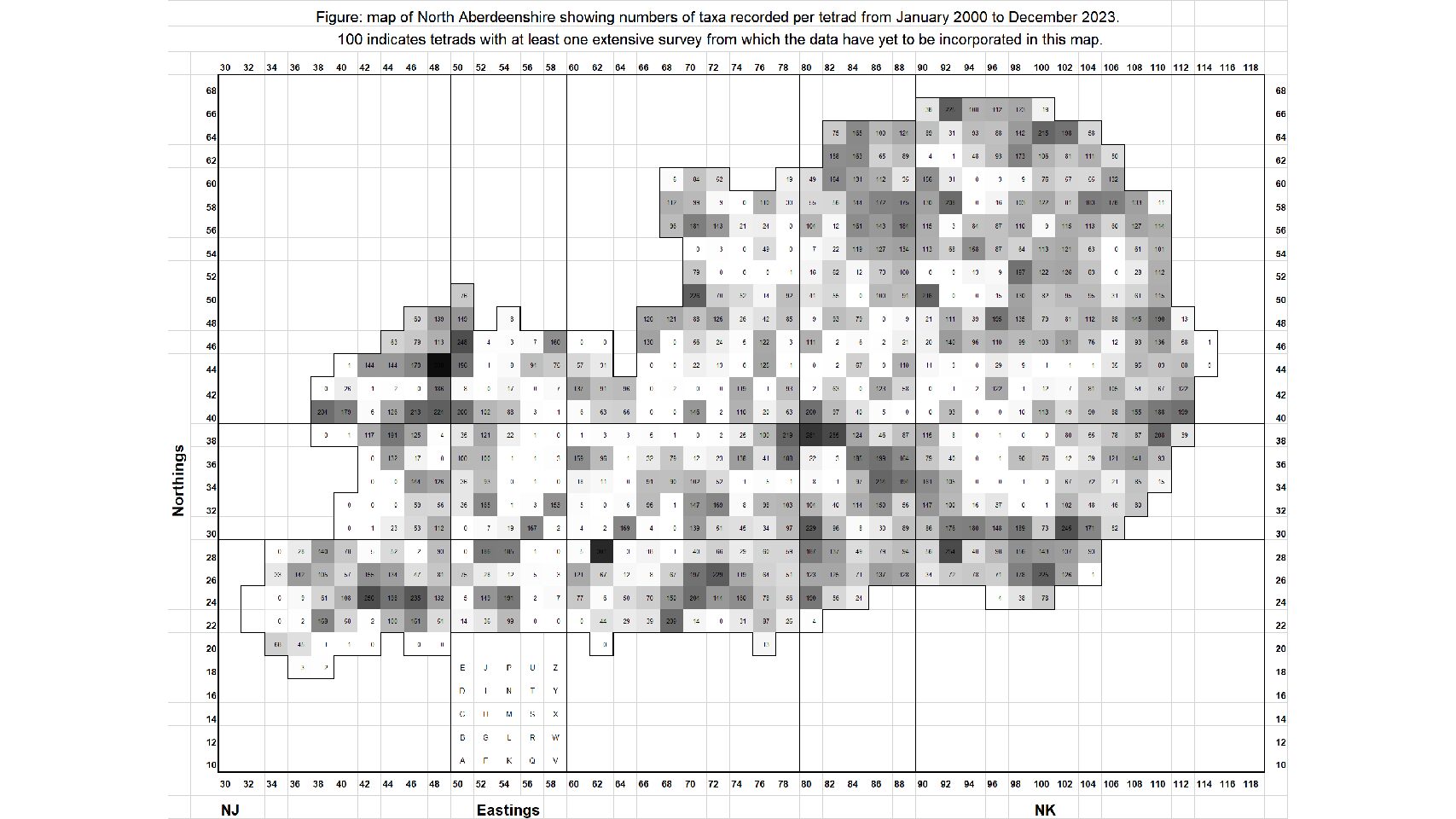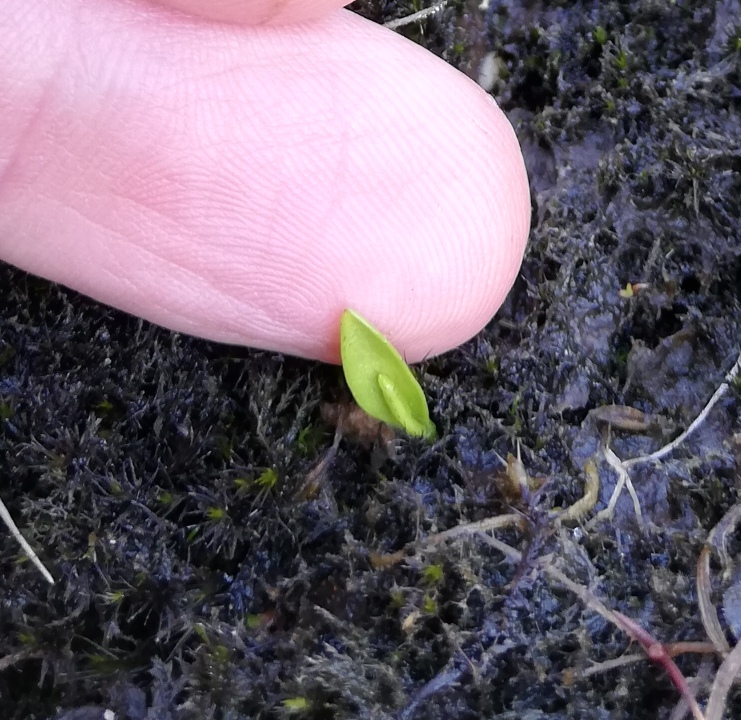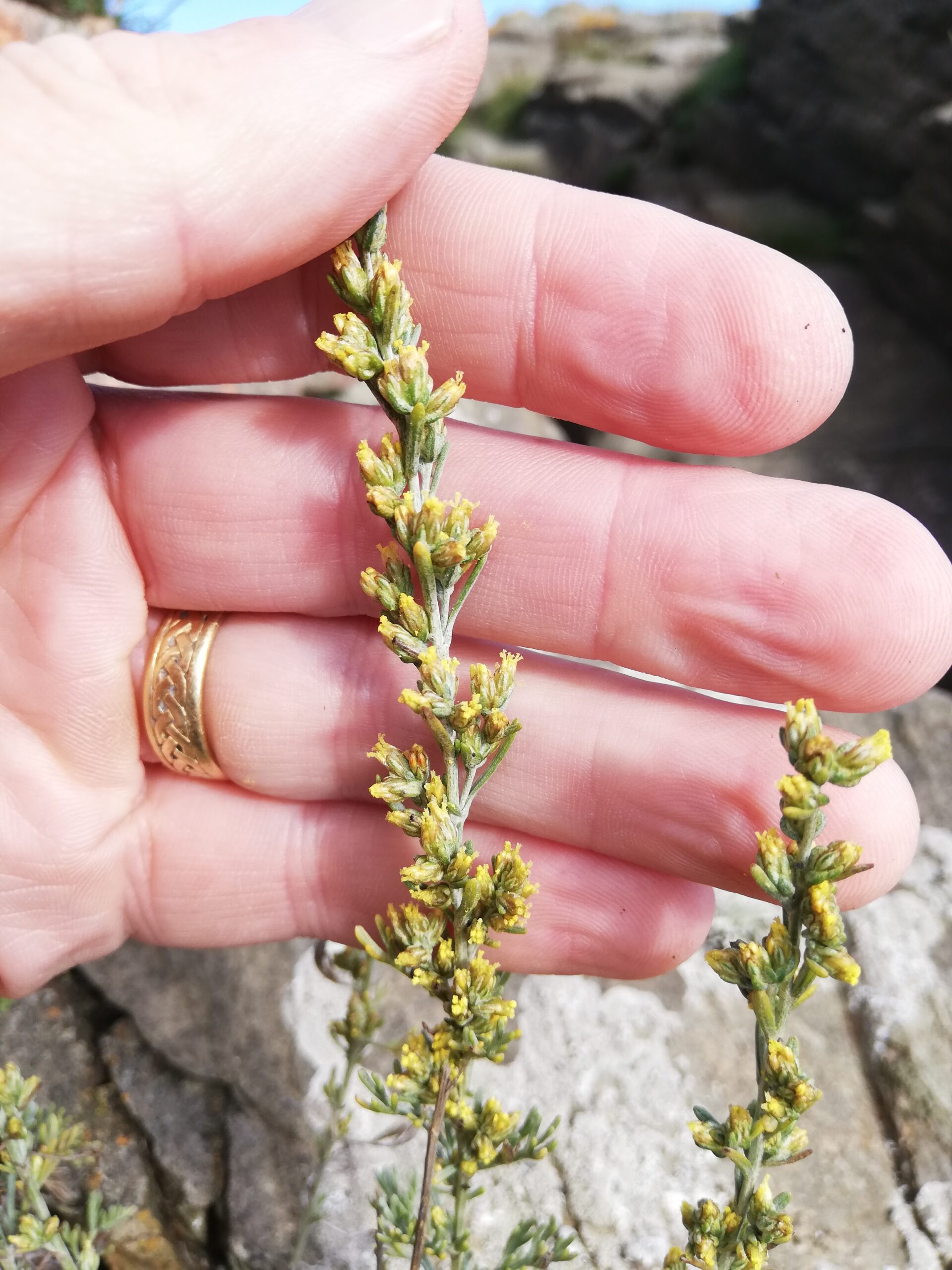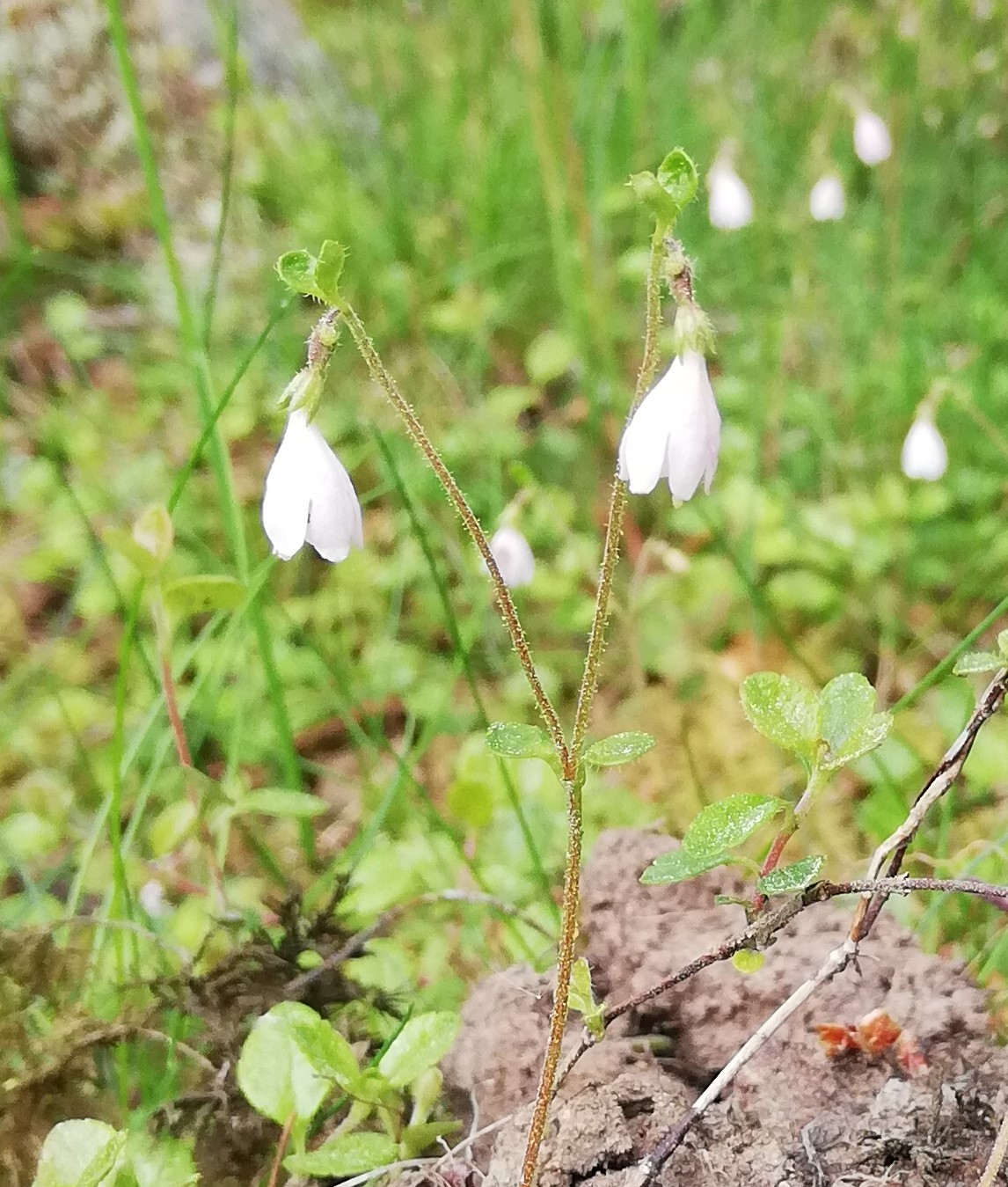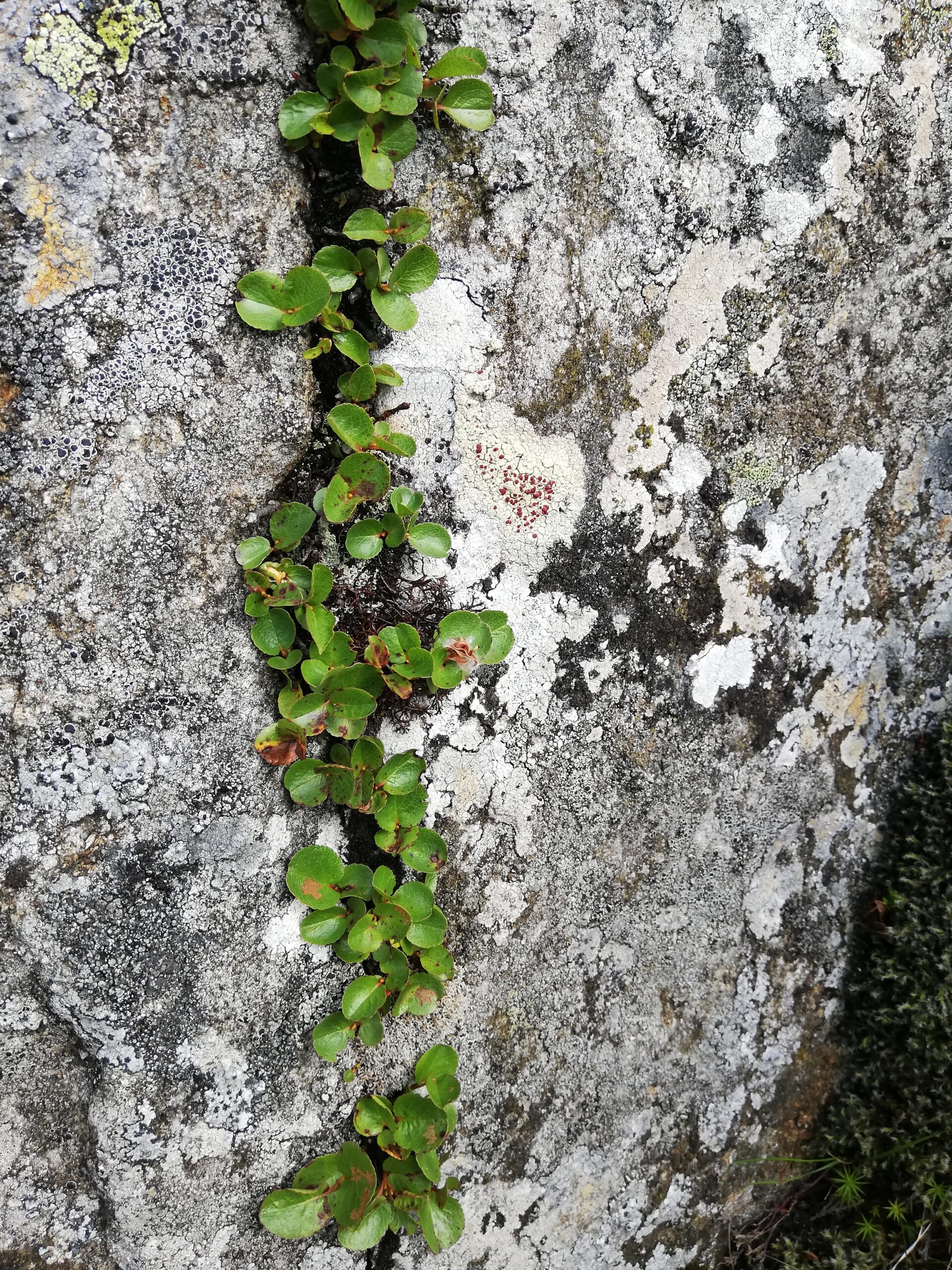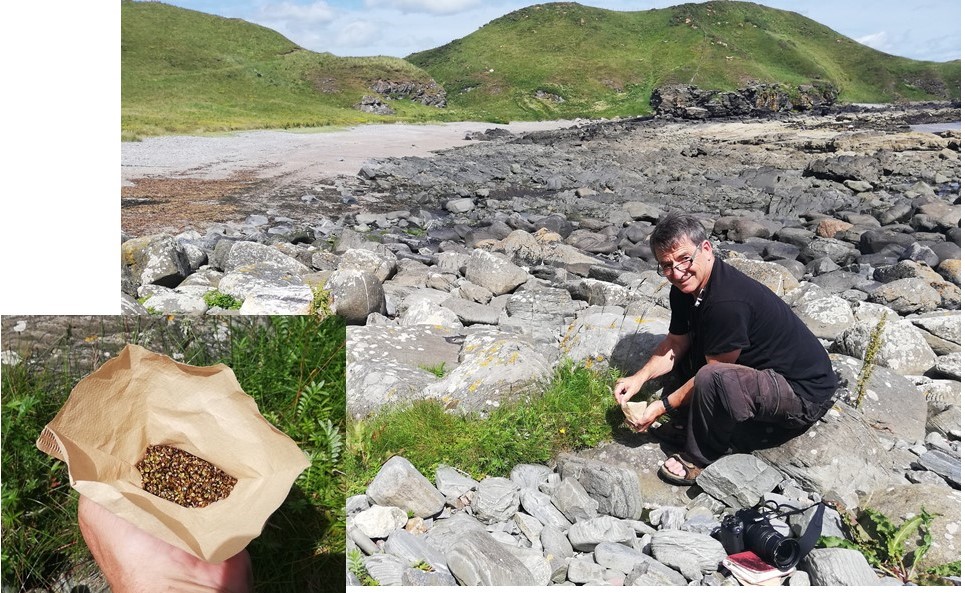
Bounded on two sides by the North Sea, North Aberdeenshire rises to 721 m at The Buck of Cabrach. In between these extremes, the intensively managed farmland is interspersed by a wide variety of habitats containing an interesting flora, described historically in:
Dickie, G. 1860, The Botanists' Guide to the Counties of Aberdeen, Banff and Kincardineshire. A. Brown & Co., Aberdeen, 344 pp.;
and more recently in:
Welch, D. 1993, Flora of North Aberdeenshire, ISBN 0-9519889-0-5.
Botanical Highlights
Botanical highlights include:
- on soft coasts, northern specialities such as Carex maritima (Curved Sedge) and Mertensia maritima (Oysterplant), the former providing material collected by Richard Lansdown for the Millenium Seedbank - main photo;
- in coastal slacks at Sands of Forvie, small populations of Ophioglossum azoricum (Small Adder's-tongue) - photo top right;
- on rocky coasts, Artemisia maritima (Sea Wormwood) - photo second top right - which has its northern limit at Whinnyfold;
- in woodland, Linnaea borealis (Twinflower) - photo one up from bottom, right - grows rarely in heathy ground under Pinus sylvestris (Scots Pine);
- on raised bogs and mires, species more characteristic of western areas like Carex limosa (Mud Sedge), Drosera anglica (Large Sundew) and Schoenus nigricans (Black Bog-rush);
- in upland base-rich flushes, plants such as Saxifraga hirculus (Marsh Saxifrage); Micranthes stellaris (Starry Saxifrage) and Sedum villosum (Hairy Stonecrop);
- on serpentine outcrops Minuartia verna (Spring Sandwort);
- in upland areas, outlying populations of mountain plants including Salix herbacea (Dwarf Willow) - photo bottom right - Diphasiastrum alpinum (Alpine Clubmoss) and Betula nana (Dwarf Birch).
Current plans
All observations of interesting plants, whether occasional records or offers to help with organised recording, would be gratefully received. Please send these to David Elston, the County Recorder.
North Aberdeenshire is covered by the North East Scotland Botanical Recording Network, which communicates via a WhatsApp group. If you would like to be included in the group, please contact David Elston.
Particular projects with which assistance would be appreciated include:
1) visiting sites in hectads with historical but not recent records of nationally designated species (the SHARPP project), progress in VC91 up to the end of December 2023 can be found here;
2) improving coverage of urban sites for the Urban Flora Project;
3) obtaining species lists from areas where tetrad coverage from 2000 onwards is poor (see map below).
Additional publicly available files relevant to North Aberdeenshire will be uploaded here.
